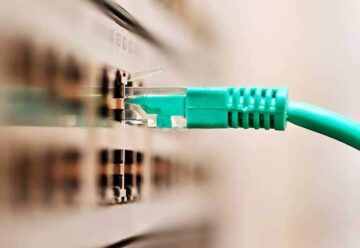What is Ethernet first mile?
You’ve probably come across the term Ethernet First Mile, but what exactly is it?
Simply put, business Ethernet or Carrier Ethernet is the most common type of connectivity used today, enabling high-bandwidth connectivity for businesses across the country. It comprises a fibre connection that runs from the network directly to your premise. Where previously Ethernet was only available in metro areas at a significant cost, today’s Ethernet services are relatively inexpensive and readily available across the UK.
With committed bandwidth and symmetrical upload and download speeds, businesses can take advantage of important business tools such as Office365 and other cloud solutions as well as perform large data transfers without worrying about capacity and speed on the network dropping.
Get high-bandwidth business Ethernet
The benefits of Ethernet first mile (EFM)
- Reduced costs as there’s no need for a leased line to the premises
- Speed of connectivity – nearly twice as quick compared to bringing fibre in to the building
- Widely available across the UK
Often most importantly, an EFM connection is not shared, ensuring security and benefits from greater resilience – if one copper wire pair fails the service is automatically re-routed as a fail-safe.
However, despite the pros, the technology is slowly edging in to retirement as it’s based on bonded pairs of copper and increasingly Fibre-To-The-Cabinet (FTTC) and Fibre-To-The-Premises (FTTP) is more commonly used as an alternative for lower bandwidth needs.
EFM vs Fibre
Whether you should opt for an EFM or a Fibre connection will depend upon your business’ needs. As mentioned above, installing EFM connections is usually quicker because they use existing copper circuits, whereas fibre ones often require extra engineering work.
Here are some other factors to consider.
Speed – with an EFM connection, your connection speed will be around 35Mbps. Fibre-optic alternatives, however, can reach speeds of up to 100Mbps or even 10Gbs.
Cost – generally, EFM connections are cheaper than Fibre, but this will depend upon your location.
Reliability – because they use light to transmit data, fibre optic connections are not affected by electrical interference, faulty electrical devices or being too far away from an exchange, as EFM connections can be.



 ';
';





